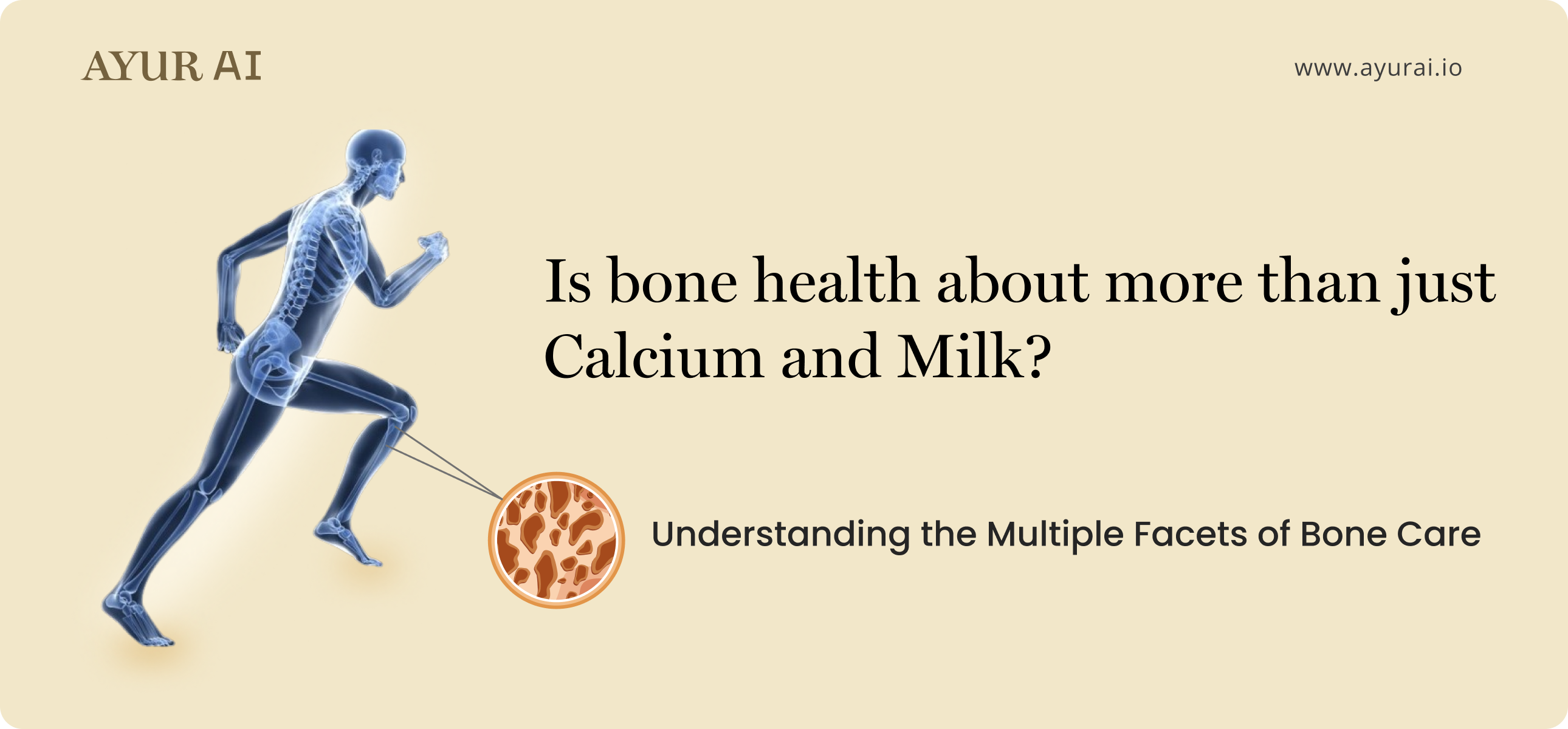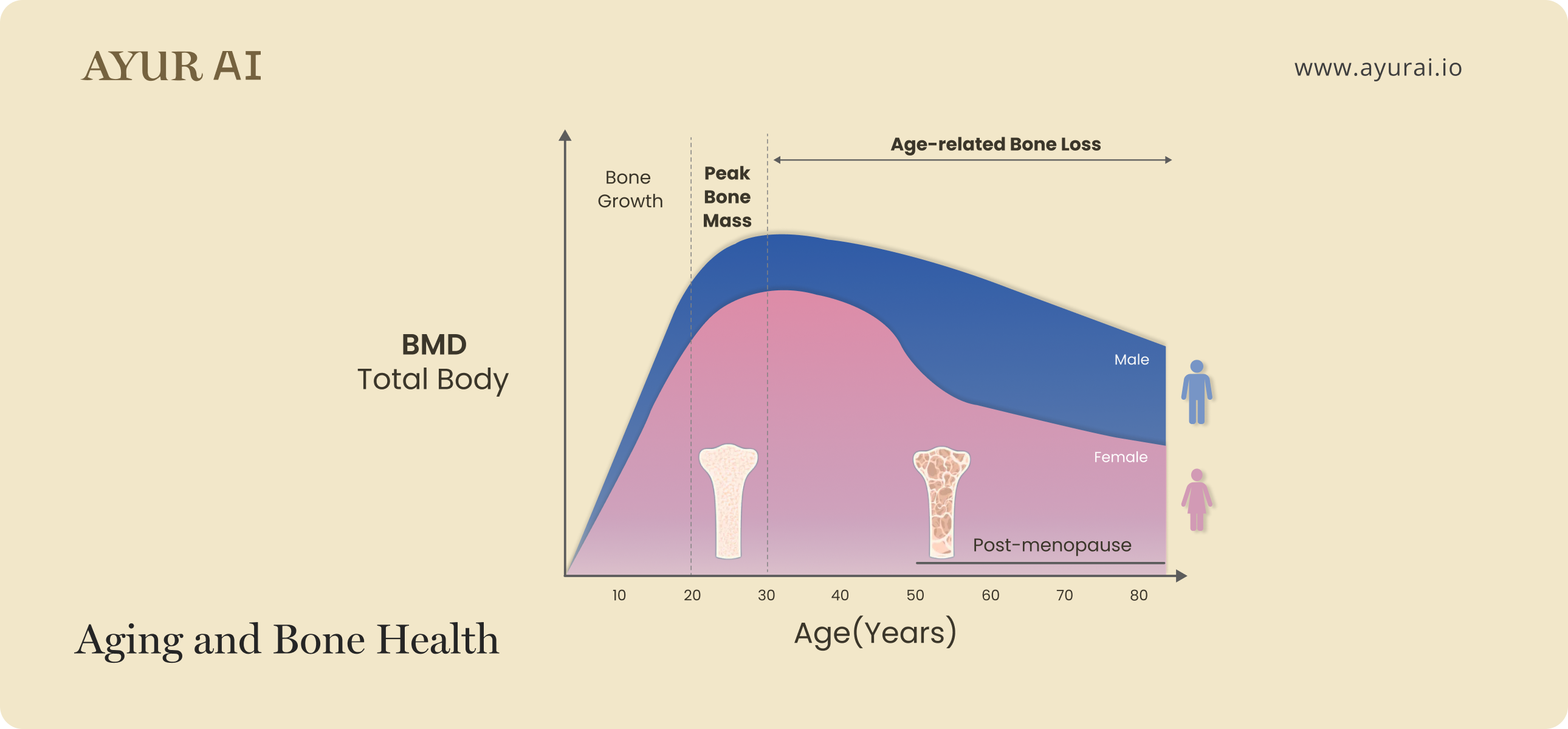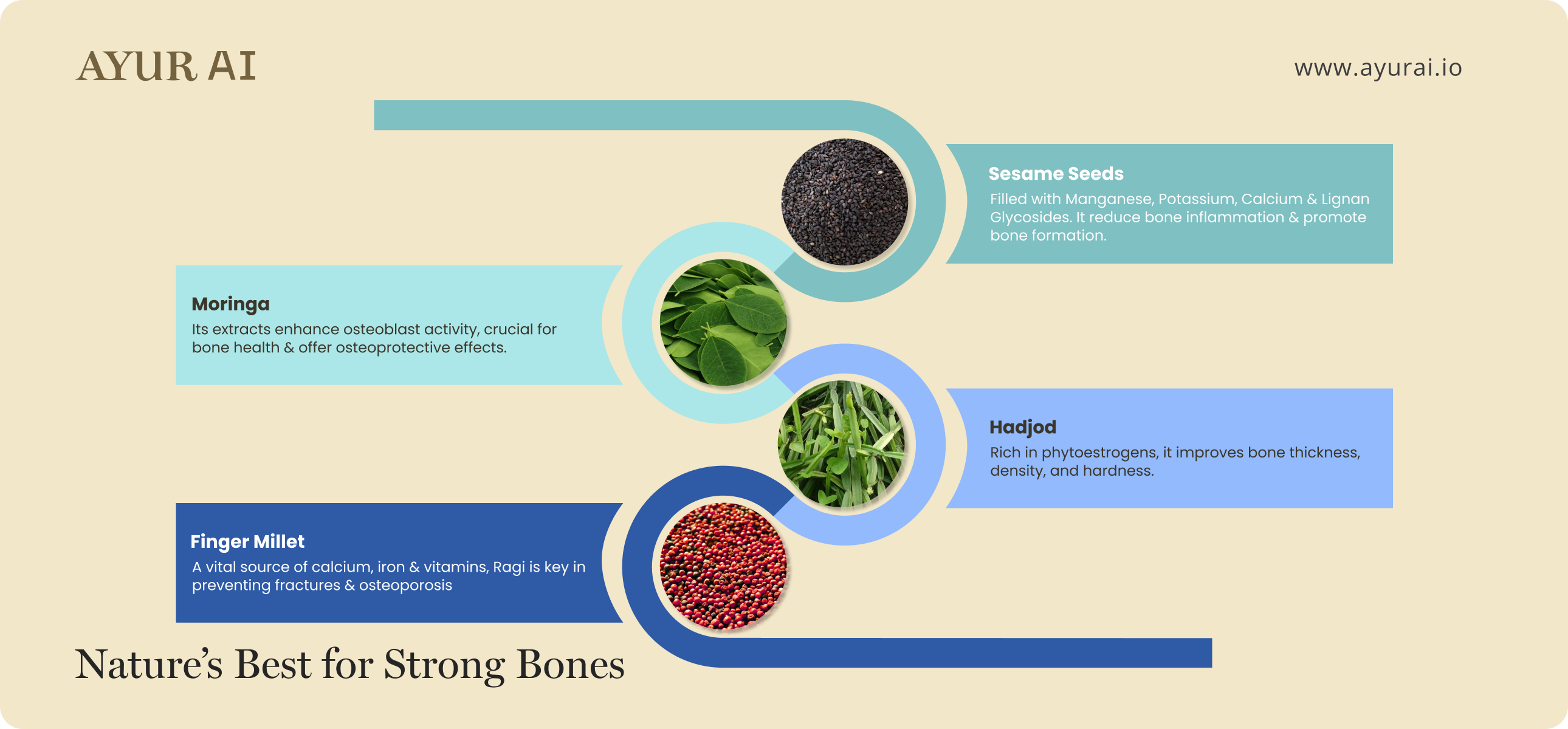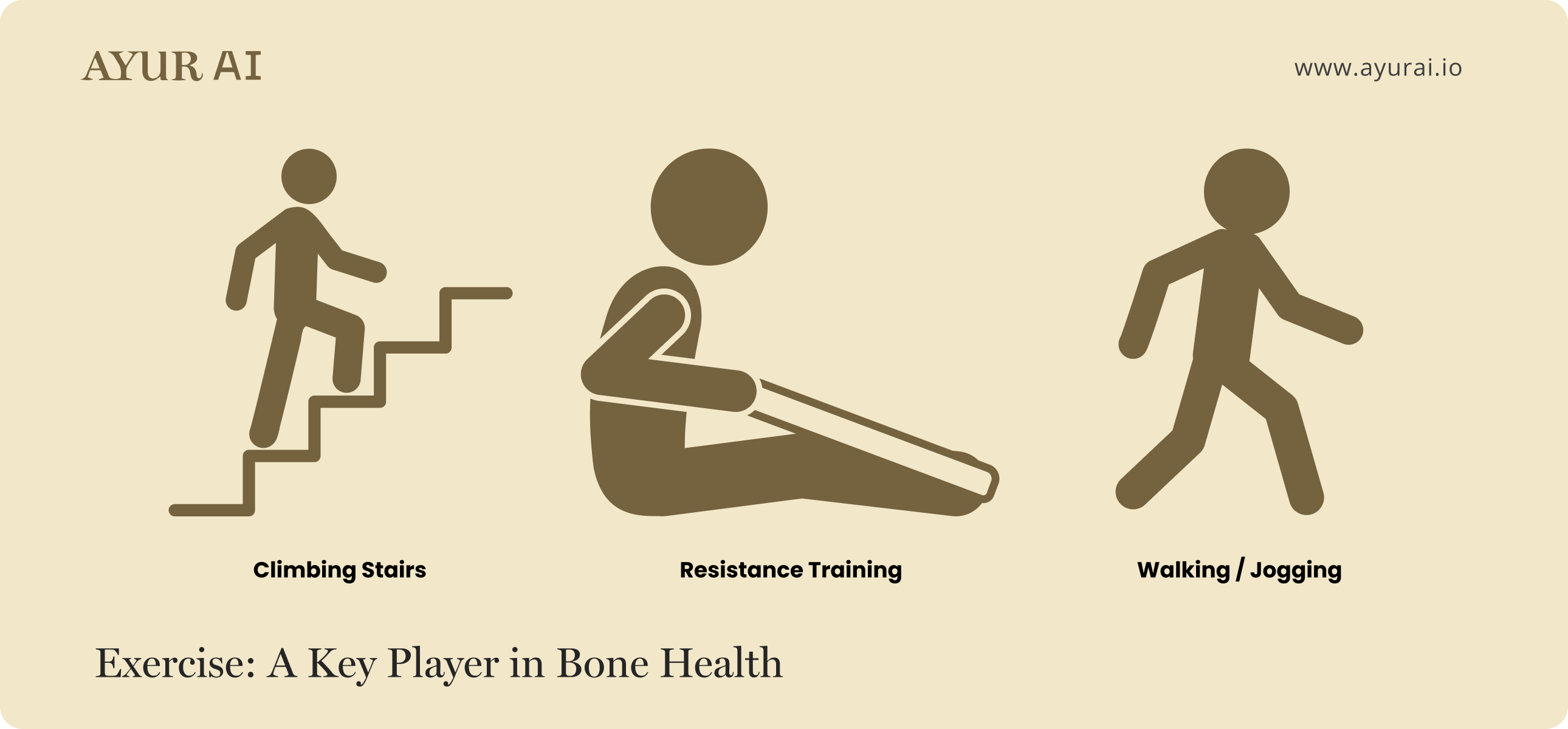
Is bone health about more than just calcium and milk?
Dr.Harinee S, B.A.M.S., M.D.(Ayu.)
Updated on 19,January,2024
While milk and calcium have been the longstanding champions of bone health, recent research suggests that the secret to strong bones might be hiding in some of nature's most unassuming foods and lifestyle. Ignoring bone health can lead to debilitating conditions like osteoporosis, eventually leading to fractures and chronic pain. It's not just about the elderly; bone health should be a priority at every age. After all, the skeleton is the framework that supports our body – keeping it strong is non-negotiable.
Aging and Bone Health

As we age, both men and women experience a gradual decline in Bone Mineral Density (BMD). This natural process highlights the importance of continued focus on bone health through diet, lifestyle, and possibly supplements in later years. BMD increases during the early years, peaking in the late twenties to early thirties. This period is crucial for building strong bones. Men typically maintain higher BMD than women, who face a significant post-menopausal decline, increasing osteoporosis and fracture risks.
Bone Health and Diet

Beyond the traditional calcium and milk narrative, a variety of foods offer surprising benefits for bone health.
-
Sesame seeds
These seeds are a powerhouse of nutrients with their high content of manganese, potassium, phosphorus, iron, and calcium. Their lignan glycosides act as antioxidants, reducing bone inflammation and promoting bone formation.
-
Moringa
The Moringa plant has shown remarkable effects in reducing urinary calcium excretion and increasing bone calcium content, offering osteoprotective effects.
-
Hadjod
The Hadjod plant is known for stimulating metabolism and enhancing mineral uptake by osteoblasts. Rich in phytoestrogens, it has been proven to increase bone thickness, density, and hardness.
-
Ragi (Finger Millet)
Finger millet, staple in many diets, is a rich source of calcium, iron, phosphorus, and vitamins. Its high mineral content, especially calcium, is crucial in preventing fractures and osteoporosis.
Exercise: A Key Player in Bone Health

Physical activity plays a crucial role in bone health. Studies indicate that exercise during childhood and adolescence is particularly effective in maximizing bone mass and strength. This proactive approach can delay the onset of osteoporosis in later life.
Regular activities like walking or jogging for about 20-30 minutes, climbing stairs, or engaging in higher intensity exercises like jumping can strengthen bones. Additionally, resistance training using weights or bands a few times weekly promotes bone and overall health. These varied exercises are important throughout life, including post-menopause, for maintaining bone mass.
References:
- Exercise and bone health across the lifespan
- The relationship between healthy lifestyles and bone health-A narrative review
- Effectiveness of Physical Activity and Finger Millet-Based Food Supplement on Biochemical Parameters and Bone Mineral Density among Premenopausal Women
- A comprehensive review of the bioactive components of sesame seeds and their impact on bone health issues in postmenopausal women